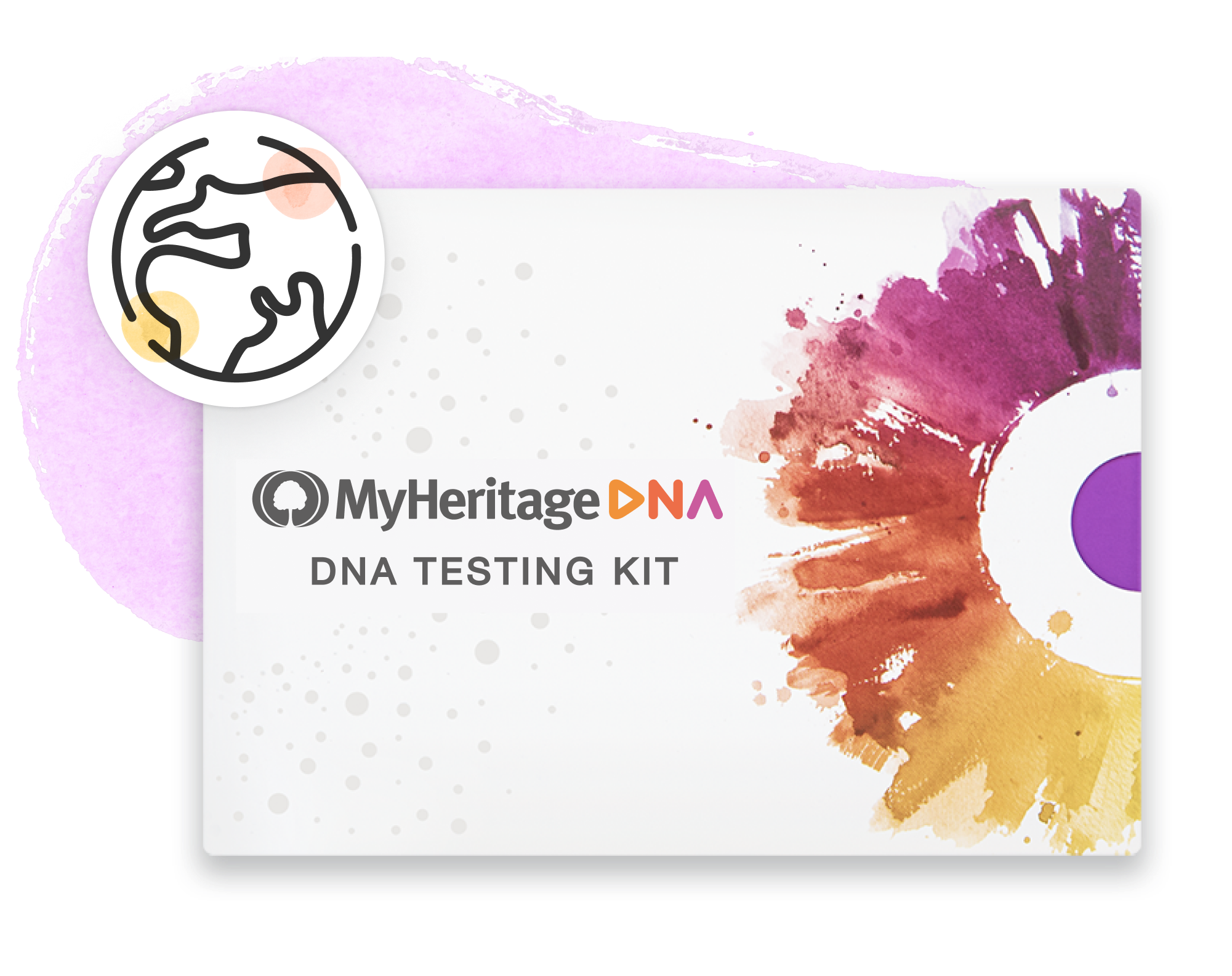
Genomic location refers to the specific position of a gene or DNA sequence within a genome. The genome is the complete set of genetic information in an organism, including all its genes and other functional elements. Understanding the genomic location of a gene is crucial for studying its function, regulation, and potential involvement in diseases. In the field of genomics, a locus refers to a specific site or position within a genome, similar to a physical address.[1] Geneticists use maps to describe the position of a particular gene or DNA segment of interest within the genome. There are two main types of maps used: cytogenetic location and molecular location.[2]
Research your ancestors on MyHeritage
Cytogenetic location
The cytogenetic location is one of the earliest techniques used,[3] and specifies the position of a specific band on a stained chromosome.[2] Geneticists utilize a standardized method to describe the cytogenetic location of a gene. The address of a gene consists of several components:
- Chromosome: The gene's location is identified by the chromosome it resides on. Autosomes, which are chromosomes 1 through 22, are denoted by their respective numbers. Sex chromosomes are designated as X or Y.[2]
- Chromosome arm: Each chromosome is divided into two sections or arms based on the location of the centromere, a constriction point. The shorter arm is referred to as p, while the longer arm is designated as q.[2]
- Gene position: The gene's position on either the p or q arm is usually indicated by two digits representing a region and a band. Additionally, a decimal point followed by one or more digits may be included to denote sub-bands within lighter or darker areas.[2]
Molecular location
As high-resolution genomic techniques became available[3] thanks to the completion of the Human Genome Project in 2003, it became possible to provide the sequence of nucleotides for each human chromosome. This sequence information enables researchers to provide a more precise address than the cytogenetic location for many genes. The molecular location of a gene identifies its position in terms of nucleotides and also indicates the gene's size.[2] This information allows researchers to determine the exact distance between a gene and other genes on the same chromosome, as well as its start and end position.
Importance of identifying genomic location
Identifying genomic location enables further study and manipulation of specific genes. If genes are close together on the genome, they are more likely to move together. A genetic marker, such as a single nucleotide polymorphism (SNP), may be associated with a particular disease or function because it is located near the actual gene of interest.[4] Local adaptation due to geographically varying natural selection has caused parallel divergence events such that the same genetic variants undergo repeated changes, which are likely to be associated with phenotypic diversity among human populations in diverse geographical regions.[1]
Genomic location and genealogy
Genetic genealogy is a field that combines traditional genealogical methods with DNA testing to determine biological relationships between individuals and trace the ancestral origins of an individual.[5] Genetic genealogy can help with the discovery of more details about the family history of a person, along with establishing the geographic location from where their DNA originated. There are three sources of information in a DNA sample: Y-chromosome DNA (Y-DNA), mitochondrial DNA (mtDNA), and autosomal DNA (atDNA). Y-DNA, on one side, is present only in samples from males and gives information on patrilineal descent; mtDNA on the other, is present in both males and females, providing information on matrilineal descent. Finally, atDNA gives information on both matrilineal and patrilineal descent.[6] Genetic genealogy has become popular in recent years, as costs have been drastically reduced and genealogical studies using molecular techniques have become accessible to the general public through at-home tests.[5] Advantages of including DNA, as opposed to traditional genealogical research alone, include the ability for researchers to extend their ancestry beyond the paper trail of recent centuries and to construct ancient pedigrees through molecular evolutionary studies.[5]
See also
Explore more about DNA
- The MyHeritage DNA test
- How to Use Chromosome Browsers for Genealogy, article in the MyHeritage Knowledge Base
- DNA Basics, Chapter 4: A Glossary of Terms from the MyHeritage Blog
- Advanced DNA Techniques: Deductive Chromosome Mapping, webinar by Blaine Bettinger, Ph.D., J.D. on Legacy Family Tree Webinars
References
- ↑ 1.0 1.1 Locus. Genome.gov
- ↑ 2.0 2.1 2.2 2.3 2.4 2.5 Gene Location. MedlinePlus
- ↑ 3.0 3.1 Samarakoon, Pubudu. Genomic coordinates to gene lists and vice versa — Annotating gene coordinates and gene lists. Medium.com
- ↑ Foxman, Betsy. Chapter 7 - Omics Analyses in Molecular Epidemiologic Studies. January 2011
- ↑ 5.0 5.1 5.2 Ancestry DNA test. Sequencing.com
- ↑ Tabassum, Rubina; Nath, Artika; Preininger, Marcela; Gibson, Greg. Geographical, environmental and pathophysiological influences on the human blood transcriptome. Curr Genet Med Rep. December 2013; 1(4): 203–211.


